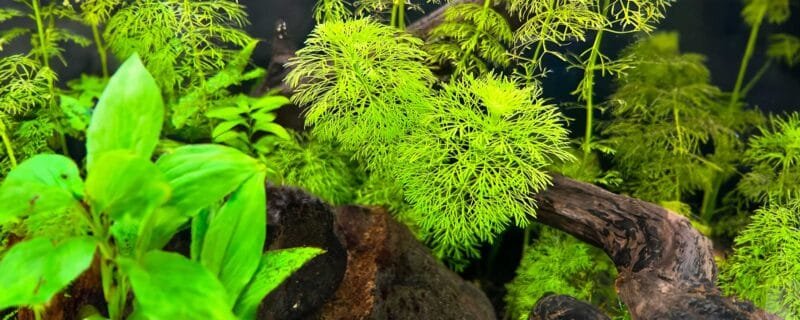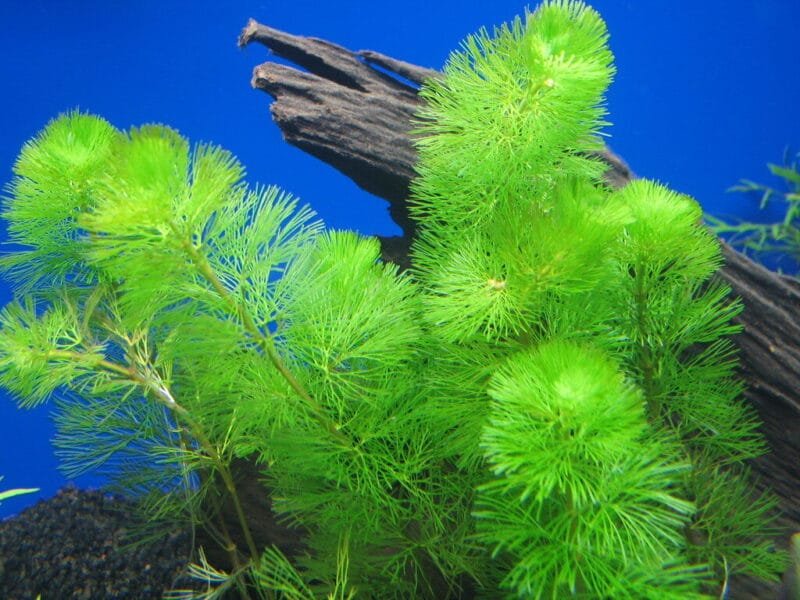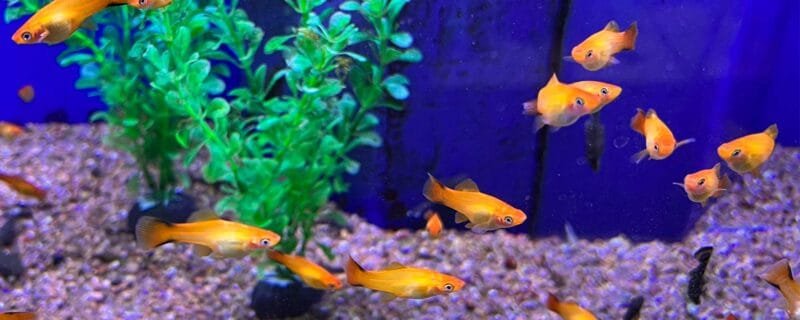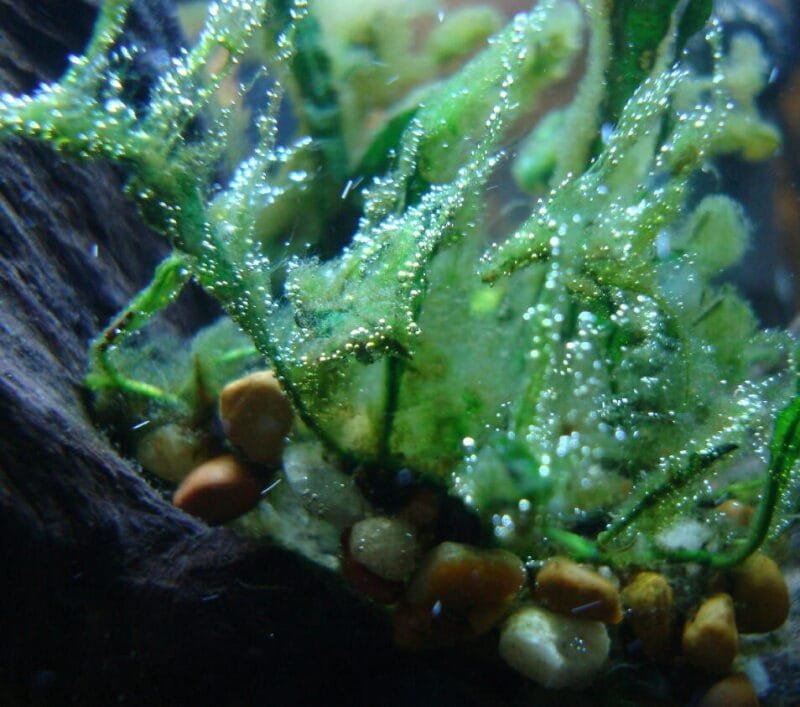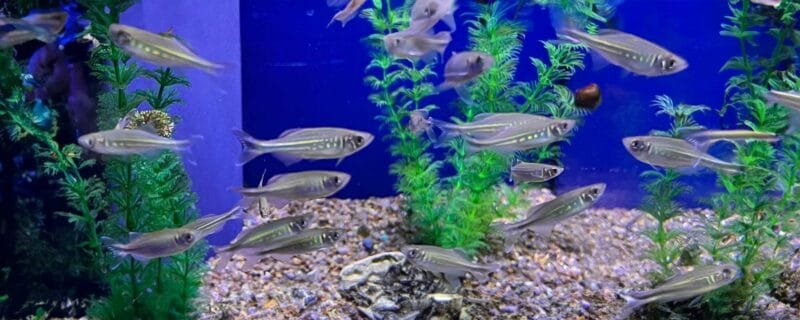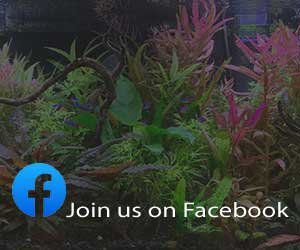Live plants transform an aquarium from a simple glass box into a living ecosystem. They improve water quality, provide oxygen, and offer natural shelter for fish and invertebrates. But beyond their functional role, aquatic plants are the artist’s brush in the aquascaper’s palette — allowing vibrant compositions of texture and color.
One of the most popular plants for adding striking color contrast in freshwater tanks is Ludwigia repens. With its deep red and bronze leaves, this easy-to-grow stem plant creates a beautiful visual anchor and is suitable for both beginners and seasoned aquascapers. In this article, we’ll dive into the origins, care, and aquascaping uses of Ludwigia repens, plus common issues and solutions to help you keep this vibrant plant thriving.
Plant Profile
Scientific and Common Names
-
Scientific name: Ludwigia repens
-
Common names: Red Ludwigia, Creeping Ludwigia
Natural Habitat and Geographic Origin
Ludwigia repens originates from North and Central America, where it grows in slow-moving streams, ponds, and marshy areas. In its natural habitat, it thrives partially submerged or fully aquatic, often carpeting the water’s edge or forming dense stands just below the surface.
Plant Type
This is a stem plant, meaning it grows vertically from a central stem and can be propagated from cuttings. Each stem features pairs of opposite leaves that transition from green at the base to deep red or bronze under good lighting conditions.
Growth Pattern
Ludwigia repens grows quickly in favorable conditions, sending out lateral shoots that form dense, bushy clusters. When allowed to reach the surface, the plant may even grow above water, producing small yellow flowers.
Placement in the Aquarium
Best used as a midground to background plant, Ludwigia repens provides depth and contrast to green foliage. In smaller tanks, it can serve as a colorful centerpiece, while in larger aquascapes, it’s perfect for creating color gradients or drawing the eye through a planted layout.
Care Guide
Lighting Requirements
Lighting is the single most important factor for developing Ludwigia’s signature red coloration.
-
Intensity: Medium to high light (30–50+ PAR at substrate level).
-
Duration: 8–10 hours per day is ideal. Avoid excessive light durations, which can promote algae.
-
Type: Full-spectrum LED lighting designed for planted aquariums works best. To enhance reds, use lights with strong red and blue wavelengths or adjustable RGB fixtures.
If lighting is too weak, the plant’s leaves will stay green and the stems may become leggy as they stretch toward the light source.
Water Parameters
Ludwigia repens is quite adaptable and can thrive in a range of freshwater conditions:
-
Temperature: 72–82°F (22–28°C)
-
pH: 6.0–7.5
-
Hardness: 3–12 dGH
Consistent water conditions are more important than perfect values. Avoid sudden changes, especially during water changes, as they can trigger leaf melt or stress.
Substrate Preferences
While Ludwigia can grow in plain gravel, it truly flourishes in nutrient-rich soil substrates such as Fluval Stratum, ADA Amazonia, or Eco-Complete. These help provide iron and trace elements needed for strong coloration and robust growth.
If using inert gravel or sand, supplement with root tabs near the base of each stem to promote root development and pigment intensity.
Fertilization and CO₂ Needs
-
Fertilization:
-
Liquid fertilizers containing iron, potassium, and micronutrients should be dosed regularly. Iron is especially crucial for vibrant reds.
-
Root tabs every 1–2 months if using an inert substrate.
-
-
CO₂ injection: Optional but beneficial. With added CO₂, growth becomes faster, leaf size increases, and coloration deepens from bronze to vivid crimson.
-
Without CO₂: Ludwigia repens still grows well under moderate light and nutrient dosing, making it one of the most forgiving red plants for low-tech aquariums.
Trimming and Propagation
-
Trimming:
Regular pruning keeps Ludwigia compact and bushy. Trim stems just above a leaf node — new shoots will sprout from the cut point, increasing density.
Over time, older lower leaves may yellow; simply remove them to encourage regrowth. -
Propagation:
Cut healthy tops 4–6 inches long and replant them into the substrate. They’ll quickly develop roots and form new plants.
Growth Rate
Medium to fast. Under high light and CO₂, Ludwigia repens can grow up to 2 inches per week. In low-tech setups, it grows more moderately, which can be easier to maintain.
Aquascaping Tips
Using Ludwigia repens in Layouts
Ludwigia repens is an aquascaper’s dream for adding warmth and contrast to green plant compositions.
-
In Nature Aquarium layouts, it pairs beautifully with fine-leaved greens like Myriophyllum mattogrossense or Rotala rotundifolia, creating natural gradients.
-
In Dutch-style aquascapes, it’s often used in color groupings or terraces to form red blocks among lush greens.
-
For jungle-style tanks, its bronze leaves add depth and visual balance against broader green plants like Echinodorus or Cryptocoryne.
Placement Strategies
-
Use in the background of small aquariums (10–20 gallons) or the midground of larger tanks.
-
Plant in dense groups of 5–10 stems for fuller, more dramatic clusters.
-
Create a color transition by planting Ludwigia repens behind shorter greens such as Staurogyne repens or Micranthemum monte carlo.
Compatibility with Hardscape
Its red tones complement dark rocks (like Seiryu or lava rock) and driftwood, creating a rich natural look. The plant’s upright stems can soften vertical lines of wood or stone, enhancing the sense of depth in a scape.
Tank Size and Layout Styles
-
Small tanks (10–20 gallons): One or two clusters create a perfect focal point.
-
Medium to large tanks (30+ gallons): Multiple groups can be placed diagonally or layered to create flow and perspective.
-
Works beautifully in community tanks, biotopes, and artistic aquascapes alike.
Tank Mates and Compatibility
Ideal Companions
Because Ludwigia repens is hardy and tolerant, it pairs well with a wide variety of peaceful freshwater species, including:
-
Fish: Tetras, Rasboras, Guppies, Platies, Gouramis, Angelfish, and peaceful Barbs.
-
Invertebrates: Shrimp (Cherry, Amano, Ghost) and snails (Nerite, Mystery, Malaysian Trumpet).
Shrimp especially enjoy grazing on biofilm that forms on Ludwigia’s stems and leaves without harming the plant.
Species to Avoid
Avoid fish that tend to uproot or eat plants, such as:
-
Goldfish
-
Silver Dollars
-
Larger Cichlids (e.g., Oscars, Jack Dempseys)
These can damage delicate stems or devour leaves.
Common Problems and Solutions
1. Green Leaves Instead of Red
-
Cause: Insufficient light or iron deficiency.
-
Solution: Increase light intensity, ensure consistent fertilization with iron, and reduce shading from other plants.
2. Melting or Yellowing Leaves
-
Cause: Sudden changes in water chemistry, temperature swings, or nutrient deficiency.
-
Solution: Keep water parameters stable, prune damaged leaves, and add root tabs or liquid fertilizers.
3. Algae Growth on Leaves
-
Cause: Too much light without adequate nutrient balance or CO₂.
-
Solution: Shorten lighting period to 8 hours, ensure balanced fertilization, and consider adding Amano shrimp or Otocinclus catfish.
4. Leggy Growth (Sparse Leaves Along Stem)
-
Cause: Low light or lack of trimming.
-
Solution: Increase light intensity, trim regularly to encourage branching, and replant healthy tops.
5. Pests (Snails or Planaria)
-
Cause: Hitchhikers from new plants.
-
Solution: Quarantine new plants before introducing them and use mild treatments (like alum dips or gentle potassium permanganate baths).
6. Stunted New Growth
-
Cause: Lack of micronutrients or CO₂ imbalance.
-
Solution: Ensure consistent dosing of micronutrients and check CO₂ levels if used.
Frequently Asked Questions
1. Does Ludwigia repens need CO₂ to grow well?
No, Ludwigia repens does not require CO₂, but it grows faster and develops deeper red coloration when CO₂ is supplemented. It remains healthy and attractive even in low-tech tanks with good lighting and fertilization.
2. Why is my Ludwigia repens turning green again?
Green leaves usually indicate low light or iron deficiency. Increasing light intensity, reducing shade, and dosing iron-rich fertilizer can restore its red hues.
3. How do I make Ludwigia repens more compact and bushy?
Regular trimming encourages side shoots. Cut the stems just above a leaf node; multiple new shoots will grow from that point, resulting in a denser, more attractive plant.
Conclusion
Ludwigia repens stands out as one of the most rewarding red plants for both beginner and advanced aquascapers. It’s easy to grow, adaptable, and stunning when healthy. Whether you’re creating a lush jungle aquascape, a disciplined Dutch layout, or a vibrant community tank, this plant provides an irresistible splash of color that enhances every design.
Long-Term Success Tips
-
Provide moderate to high light for rich red tones.
-
Dose iron and micronutrients regularly.
-
Trim often to maintain a bushy, full appearance.
-
Pair with complementary greens and textured plants for contrast.
With a little care and attention, Ludwigia repens becomes the visual centerpiece of any freshwater aquarium — a living reminder of how color and life can transform glass and water into a thriving underwater garden.

